The Ultimate Guide to Fill in Dirt: What You Need to Know for a Successful Landscape Transformation
 Are you planning a landscape transformation? Look no further than fill in dirt! Whether you’re building a garden bed, leveling the ground, or creating a driveway, fill in dirt is the foundation you need for a successful project. In this ultimate guide, we’ll explore everything you need to know about fill in dirt and how it can help you achieve your landscaping goals.
Are you planning a landscape transformation? Look no further than fill in dirt! Whether you’re building a garden bed, leveling the ground, or creating a driveway, fill in dirt is the foundation you need for a successful project. In this ultimate guide, we’ll explore everything you need to know about fill in dirt and how it can help you achieve your landscaping goals.
Fill in dirt is soil used to fill voids or low areas in your yard, providing a stable base for various landscaping projects. It is typically a mixture of sand, clay, and organic matter, making it ideal for promoting proper drainage and supporting plant growth.
With our step-by-step guide, you’ll learn how to determine the quantity of fill in dirt needed for your project, where to source high-quality materials, and how to properly distribute and compact it. We’ll also provide helpful tips on minimizing soil erosion, preventing settling, and ensuring long-term stability.
Don’t let uneven terrain or low spots hinder your landscaping dreams. Discover the ins and outs of fill in dirt and transform your outdoor space into a stunning oasis. Let’s get started on your landscape journey today!
Dirt Connections is a participant in the Amazon Services LLC Associates Program, an affiliate advertising program designed to provide a way for websites to earn advertising revenues by advertising and linking to Amazon.com.
Understanding the Importance of Fill in Dirt in Landscaping
Fill soil is crucial for any successful landscape transformation. It provides a stable and level base for a wide range of projects. Whether you’re creating a new garden bed, leveling uneven ground, or constructing a driveway, fill soil is essential for ensuring the long-term integrity and functionality of your landscape.
Without proper fill soil, your landscaping projects can face issues like uneven settling, poor drainage, and structural failure. Imagine planting a beautiful garden only to have it become lopsided due to an unstable foundation. Or picture a newly paved driveway that cracks because the underlying soil was not properly prepared. These scenarios are common when fill soil is overlooked or improperly used.
By understanding the critical role of fill soil in landscaping, you can avoid these pitfalls. It provides the necessary support and drainage to ensure your plants thrive, your hardscaping remains intact, and your overall outdoor space functions seamlessly. Investing in high-quality fill soil is a small but essential step in transforming your landscape into a true oasis of beauty and functionality.
Benefits in Landscape Transformation
 Using fill in dirt in your landscape transformation has many benefits. It improves drainage and enhances the overall structural integrity of your outdoor space. Fill in dirt is versatile and indispensable for landscapers.
Using fill in dirt in your landscape transformation has many benefits. It improves drainage and enhances the overall structural integrity of your outdoor space. Fill in dirt is versatile and indispensable for landscapers.
One major advantage of this material is its ability to level uneven ground. Whether you’re dealing with natural dips or areas disturbed by construction, fill in dirt can create a smooth, level surface. This enhances the aesthetic appeal of your landscape and ensures that hardscaping elements like patios and driveways are properly supported.
Fill in Dirt Also Improves Drainage
By filling in low areas and creating a gradual slope, fill helps redirect water away from your home’s foundation. This prevents pooling and stagnation, which is especially important in areas with high rainfall or heavy clay soils.
Additionally, the composition of fill, typically a mix of sand, clay, and organic matter, provides an excellent foundation for plant growth. The sand and clay improve soil structure and drainage, while the organic matter supplies essential nutrients for plants. This makes fill in dirt ideal for creating raised garden beds, filling in low areas, or establishing a solid base for your lawn or landscaping.
By leveraging the benefits of fill in dirt, you can transform your outdoor space into a visually stunning and functionally sound landscape. Whether you’re tackling a major landscaping project or addressing a few problem areas, the strategic use of this material can make all the difference.
Different Types of Fill in Dirt and Their Uses
 Different types of fill in dirt are suited for specific landscaping applications. Understanding the various types and their uses can help you make an informed decision.
Different types of fill in dirt are suited for specific landscaping applications. Understanding the various types and their uses can help you make an informed decision.
Topsoil is rich in organic matter and nutrients, making it an excellent choice for garden beds and lawn areas. It is often used as a top dressing or incorporated directly into the soil to improve plant growth.
Subsoil, or “borrow dirt,” is found deeper underground. It is less nutrient-dense than topsoil but is used for filling larger areas, like low sections of a yard or as a base for driveways and pathways. Subsoil provides a stable, well-draining foundation for hardscaping elements.
Crushed rock or gravel is composed of small, angular stone fragments. It is used in applications requiring a rigid, load-bearing base, like constructing retaining walls or creating a sturdy base for patios. The coarse texture of crushed rock prevents settling and provides excellent drainage.
In some cases, a specialized blend of fill is needed. For example, a mix of topsoil, compost, and sand may be used to create a custom soil blend for raised garden beds. Similarly, a combination of subsoil and crushed rock can create a stable base for a driveway.
By selecting the right type of fill for your project, you can ensure the long-term success and stability of your outdoor space.
How to Source and Evaluate for Your Project
Sourcing and evaluating the right fill in dirt for your landscape transformation is crucial. The quality and composition of the fill in dirt you choose can make or break the success of your project.
First, determine the quantity you’ll need. Measure the area and calculate the volume based on the desired depth. This ensures you have enough fill in dirt to complete the job.
To find a supplier, consider local landscape supply companies, quarries, or construction sites with excess soil. Research and compare multiple suppliers to find the best quality and price.
Evaluate the fill in dirt by performing a visual inspection. Look for a mix of sand, clay, and organic matter. You can also request a soil analysis to understand its pH level, nutrient content, and potential contaminants. Avoid fill in dirt contaminated with chemicals or heavy metals.
By sourcing and evaluating fill in dirt carefully, you can ensure you’re working with high-quality material. This will provide a stable, well-draining, and nutrient-rich foundation for your outdoor space.
Preparing the Site for Fill in Dirt Placement
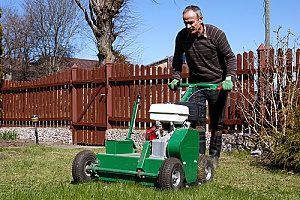 Properly preparing the site is crucial before adding fill in dirt. Follow these steps to ensure a stable foundation.
Properly preparing the site is crucial before adding fill in dirt. Follow these steps to ensure a stable foundation.
First, remove any existing vegetation, such as grass or weeds. Use tools like shovels or rakes, or consider a chemical herbicide. Dispose of the removed plant matter properly.
Next, assess the existing soil conditions. If the area has poor drainage or high clay content, incorporate materials like sand or organic matter to improve soil structure. This can be done by tilling or mixing the amendments into the existing soil.
Level the area using a rake or a small tractor-mounted grading blade. The goal is to create a flat, level base. On sloped or uneven sites, create terraces or retaining walls to stabilize the area and prevent erosion.
Ensure proper drainage by checking existing systems like French drains. Make sure the area slopes to allow efficient water flow away from the fill in dirt placement.
By preparing the site properly, you’ll create a stable and well-draining foundation for your fill in dirt. This attention to detail will ensure the longevity and functionality of your outdoor space.
Proper Techniques for Spreading and Compacting Fill in Dirt
Properly distributing and compacting fill in dirt creates a stable, level foundation for your landscape transformation.
Work in manageable sections to control the depth and distribution of the fill in dirt. Begin with a base layer of 4-6 inches and use a rake or shovel to evenly spread it.
Compact each layer thoroughly before adding the next. Use a plate compactor, hand tamper, or lawn roller. Compaction eliminates air pockets, reduces settling risk, and creates a stable foundation.
Pay attention to moisture content. The fill in dirt should be slightly damp but not saturated. If too dry, it won’t compact well. If too wet, it can become dense and impermeable.
Maintain a consistent depth and level throughout the fill in dirt placement. This ensures a smooth surface, preventing water drainage issues or hardscaping problems.
On slopes or against retaining walls, use geotextile fabric or other stabilizing materials to secure the fill in dirt.
By following these techniques, you’ll create a solid foundation that supports the long-term success of your landscape transformation.
Essential Tools and Supplies for Working with Fill Dirt
- Tools for Dirt
- Lawn Leveling Rake
- Dirt Hand Tools
- Soil Testing Kits
- Safety Gear
- Soil Amendments
- Landscape Fabrics
- Geotextiles
- Mositure Meters
- Plate Compactors
- pH Test Kits
- Retaining Wall Kits
- Garden Gloves
- Bulk Soil Delivery
- Thatcher
Common Mistakes to Avoid When Using Fill in Dirt
 Avoid these common mistakes to ensure a successful landscape transformation with fill in dirt:
Avoid these common mistakes to ensure a successful landscape transformation with fill in dirt:
Skipping Site Preparation
Mistake: Not properly preparing the site can lead to issues like uneven settling and poor drainage.
Solution: Remove existing vegetation, address soil quality, and create a level, well-draining base.
Choosing the Wrong Type of Fill Dirt
Mistake: Using the wrong type can cause poor plant growth, structural instability, or damage to hardscaping.
Solution: Select the appropriate fill dirt based on your specific project needs, like topsoil for garden beds or crushed rock for driveways.
Insufficient Compaction
Mistake: Failing to compact adequately can lead to significant settling, causing uneven surfaces and cracks.
Solution: Compact each layer thoroughly using a plate compactor, hand tamper, or lawn roller to create a solid foundation.
Over-Compacting the Fill in Dirt
Mistake: Over-compacting can create a dense, impermeable layer that hinders drainage and plant growth.
Solution: Ensure the fill in dirt is slightly damp during compaction and avoid excessive pressure to maintain proper soil structure.
Improper Grading and Sloping
Mistake: Neglecting to grade or slope correctly can result in water pooling and erosion problems.
Solution: Ensure the area is sloped to facilitate efficient water drainage away from structures and fill in dirt placements.
Ignoring Moisture Content
Mistake: Working with fill dirt that is too dry or too wet can lead to ineffective compaction and other issues.
Solution: Use fill dirt that is slightly damp for optimal compaction and avoid overly saturated material.
Using Contaminated Fill in Dirt
Mistake: Utilizing fill in dirt that contains harmful substances or pollutants can negatively impact soil quality and plant health.
Solution: Source high-quality fill in dirt from reputable suppliers and avoid materials with potential contaminants.
Overlooking Erosion Control
Mistake: Failing to implement erosion control measures can cause the fill in dirt to wash away over time.
Solution: Use geotextile fabric, retaining walls, or other stabilizing materials to prevent erosion and maintain fill in dirt stability.
Not Allowing for Settling Time
Mistake: Failing to let the fill in dirt settle can lead to future unevenness and instability.
Solution: After placing and compacting fill in dirt, let it settle for a period before proceeding with further construction or planting.
By being aware of these common mistakes and taking proactive steps to avoid them, you can ensure that your use of fill in dirt leads to a successful and long-lasting landscape transformation. Proper preparation, material selection, and installation techniques are key to achieving your desired results.
How to Choose the Right Fill in Dirt for Your Project
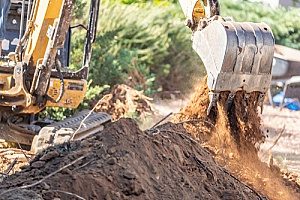 Choosing the right fill in dirt is crucial for your project’s success. First, understand the needs of your specific project. Next, consider the type of soil required, such as topsoil for gardens or subsoil for larger areas. Always inspect the fill in dirt for quality. Look for a mix of sand, clay, and organic matter. This ensures proper drainage and stability. Lastly, buy from reputable suppliers to avoid contamination.
Choosing the right fill in dirt is crucial for your project’s success. First, understand the needs of your specific project. Next, consider the type of soil required, such as topsoil for gardens or subsoil for larger areas. Always inspect the fill in dirt for quality. Look for a mix of sand, clay, and organic matter. This ensures proper drainage and stability. Lastly, buy from reputable suppliers to avoid contamination.
Step-by-Step Guide to Leveling Your Yard with Fill in Dirt
Leveling your yard with fill in dirt is simple with these steps. First, clear the area of plants and debris. Then, measure the space to determine how much fill in dirt you need. Spread the dirt evenly in layers, each about 4-6 inches thick. After each layer, compact the dirt using a hand tamper or lawn roller. Repeat until you reach the desired height. Finally, rake the surface smooth and check for evenness.
Benefits of Using Fill in Dirt in Garden Landscaping
 Using fill in dirt in garden landscaping offers many benefits. First, it helps level uneven areas, creating a more attractive garden. Additionally, fill in dirt improves drainage, preventing waterlogged soil. This supports healthier plant growth. Moreover, fill in dirt provides a stable base for garden beds and other structures. By choosing the right fill in dirt, you enhance both the beauty and functionality of your garden.
Using fill in dirt in garden landscaping offers many benefits. First, it helps level uneven areas, creating a more attractive garden. Additionally, fill in dirt improves drainage, preventing waterlogged soil. This supports healthier plant growth. Moreover, fill in dirt provides a stable base for garden beds and other structures. By choosing the right fill in dirt, you enhance both the beauty and functionality of your garden.
Comparing Fill in Dirt to Topsoil: What You Need to Know
Understanding the differences between fill soil and topsoil is key. Fill soil is used for filling holes and leveling ground. It contains less organic matter but provides stability. Topsoil, on the other hand, is rich in nutrients, making it ideal for planting. Use topsoil for gardens and lawns, while fill soil is better for foundational work. Knowing when to use each type will help your landscaping projects succeed.
Fill in Dirt for Building Foundations: Best Practices
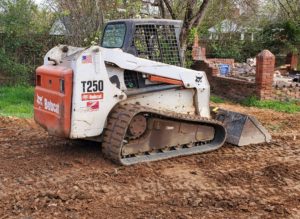 Using fill in dirt for building foundations requires careful planning. First, choose high-quality fill in dirt with a good mix of sand, clay, and organic matter. Before adding fill in dirt, clear and level the site. Spread the dirt in layers, compacting each one thoroughly. Ensure the foundation has proper drainage to prevent water damage. Following these steps ensures a strong and stable foundation for your building.
Using fill in dirt for building foundations requires careful planning. First, choose high-quality fill in dirt with a good mix of sand, clay, and organic matter. Before adding fill in dirt, clear and level the site. Spread the dirt in layers, compacting each one thoroughly. Ensure the foundation has proper drainage to prevent water damage. Following these steps ensures a strong and stable foundation for your building.
How to Test and Improve Soil Quality with Fill in Dirt
Testing and improving soil quality with fill in dirt is essential. Start by testing your soil’s pH and nutrient levels. Use a soil test kit for accurate results. If your soil lacks nutrients, mix in high-quality fill in dirt. This adds stability and improves drainage. For better results, combine fill in dirt with compost or other organic matter. Regularly test your soil to maintain optimal growing conditions.
DIY Projects for Homeowners
Fill in dirt is perfect for various DIY projects. You can create garden beds, level your yard, or build a patio base. Start by clearing the area and measuring the space. Spread fill in dirt evenly and compact it for stability. For garden beds, mix fill in dirt with compost. For patios, ensure the base is level and firm. These simple projects enhance your home’s outdoor space and are easy to do yourself.
How to Prepare and Level Your Yard with Fill Dirt
- Lawn Leveling Rake
- Dirt Hand Tools
- Soil Testing Kits
- Safety Gear
- Soil Amendments
- Landscape Fabrics
- Geotextiles
- Mositure Meters
- Plate Compactors
- pH Test Kits
- Retaining Wall Kits
- Garden Gloves
- Bulk Soil Delivery
- Thatcher
How to Calculate the Amount of Fill in Dirt Needed
Calculating the amount of fill in dirt needed is straightforward. First, measure the length, width, and depth of the area you need to fill. Multiply these measurements to get the volume in cubic feet. To convert to cubic yards, divide by 27. It’s always wise to order a bit more than calculated to account for settling and compaction. Accurate calculations ensure you have enough fill in dirt for your project.
Plant Health: What Gardeners Should Know
 Fill in dirt plays a significant role in plant health. It provides a stable base and improves soil structure. However, fill in dirt alone might lack nutrients. For better plant growth, mix fill in dirt with topsoil or compost. This combination ensures proper drainage and supplies essential nutrients. Regularly monitor your soil’s condition and adjust as needed to maintain a healthy garden environment.
Fill in dirt plays a significant role in plant health. It provides a stable base and improves soil structure. However, fill in dirt alone might lack nutrients. For better plant growth, mix fill in dirt with topsoil or compost. This combination ensures proper drainage and supplies essential nutrients. Regularly monitor your soil’s condition and adjust as needed to maintain a healthy garden environment.
Environmental Benefits
Using recycled fill in dirt offers significant environmental benefits. By repurposing excess soil from construction sites, we reduce waste and lower the demand for new soil extraction. This practice helps preserve natural habitats and minimizes the environmental impact of landscaping projects. Additionally, recycled fill in dirt often costs less, making it an economical choice. By choosing recycled fill in dirt, you support sustainable landscaping and contribute to environmental conservation.
How to Source Dirt Locally
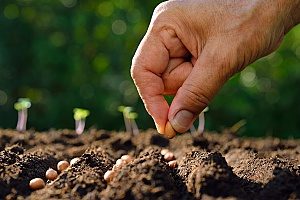 Finding high-quality fill in dirt locally is essential for your project’s success. Start by researching local suppliers and reading reviews. Visit the suppliers to inspect the fill in dirt for a good mix of sand, clay, and organic matter. Ask questions about the dirt’s origin to ensure it’s free from contaminants. Buying locally not only supports your community but also reduces transportation costs and environmental impact.
Finding high-quality fill in dirt locally is essential for your project’s success. Start by researching local suppliers and reading reviews. Visit the suppliers to inspect the fill in dirt for a good mix of sand, clay, and organic matter. Ask questions about the dirt’s origin to ensure it’s free from contaminants. Buying locally not only supports your community but also reduces transportation costs and environmental impact.
Seasonal Tips
Using fill in dirt effectively throughout the seasons enhances your landscaping efforts. In spring, use fill in dirt to create raised garden beds and improve soil structure. During summer, focus on leveling your yard and preparing areas for new projects. In fall, fill in dirt can help with drainage improvements before winter rains. Each season offers unique opportunities to utilize fill in dirt for optimal results.
Erosion Control: Best Practices
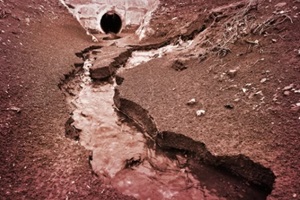 Fill in dirt plays a crucial role in erosion control. To prevent soil erosion, use fill to create stable slopes and terraces. Install retaining walls where necessary to hold the fill in dirt in place. Additionally, apply a layer of topsoil or mulch on top to protect against wind and water erosion. These practices ensure that your landscape remains intact and visually appealing over time.
Fill in dirt plays a crucial role in erosion control. To prevent soil erosion, use fill to create stable slopes and terraces. Install retaining walls where necessary to hold the fill in dirt in place. Additionally, apply a layer of topsoil or mulch on top to protect against wind and water erosion. These practices ensure that your landscape remains intact and visually appealing over time.
Combining Soil Amendments
Combining fill in dirt with other soil amendments enhances soil quality. Mix fill in dirt with compost to increase nutrient content and improve soil structure. Adding sand can improve drainage in heavy clay soils. This combination creates a balanced soil that supports healthy plant growth. Regularly testing and amending your soil ensures it remains fertile and well-draining for optimal landscaping results.
Case Studies: Successful Landscape Projects
Real-life examples of successful landscape projects demonstrate the versatility of fill soil. One project involved using fill soil to level a yard and create a stunning garden space. Another case used fill soil for a stable base in a driveway construction. These projects showcase the practical applications of fill soil and inspire readers to use it effectively in their landscaping endeavors.
How to Handle Excess Fill in Dirt After Your Project
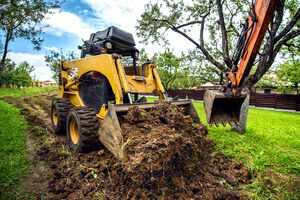 Handling excess fill in dirt properly is important for your project’s completion. First, consider storing it for future use. If storage is not an option, you can offer it to neighbors or list it online for free. Alternatively, contact local waste management for proper disposal. Managing excess fill responsibly prevents environmental harm and keeps your project site clean.
Handling excess fill in dirt properly is important for your project’s completion. First, consider storing it for future use. If storage is not an option, you can offer it to neighbors or list it online for free. Alternatively, contact local waste management for proper disposal. Managing excess fill responsibly prevents environmental harm and keeps your project site clean.
Safety Tips for Handling and Distributing
Safety is paramount when handling fill in dirt. Always wear protective gear like gloves and safety glasses. Use proper lifting techniques to avoid injury and employ tools like shovels and wheelbarrows to distribute the dirt. If using heavy machinery, ensure you are trained and follow all safety guidelines. These precautions help prevent accidents and ensure a smooth, safe project.
Fill in Dirt and Hardscaping: Creating Durable Structures
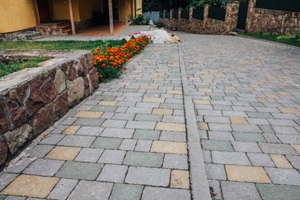 Fill in dirt is essential for creating durable hardscaping structures. Use it to build solid foundations for patios, walkways, and retaining walls. Properly compact each layer of fill in dirt to prevent settling and ensure stability. This creates a strong base that supports the weight of hardscaping materials. By using fill correctly, you enhance the longevity and durability of your hardscape projects.
Fill in dirt is essential for creating durable hardscaping structures. Use it to build solid foundations for patios, walkways, and retaining walls. Properly compact each layer of fill in dirt to prevent settling and ensure stability. This creates a strong base that supports the weight of hardscaping materials. By using fill correctly, you enhance the longevity and durability of your hardscape projects.
Summary
This blog is your ultimate guide to using fill soil for successful landscaping projects. We cover everything from choosing the right fill soil and leveling your yard to understanding the benefits of using fill soil in garden landscaping. You’ll also learn the key differences between fill soil and topsoil, get best practices for using fill soil in building foundations, and find out how to test and improve soil quality.
We also dive into practical DIY projects using fill soil, how to calculate the amount you need, and how fill soil impacts plant health. You’ll discover the environmental benefits of using recycled fill soil, tips for sourcing high-quality fill soil locally, and seasonal advice for using fill soil effectively. We address erosion control, combining fill soil with other soil amendments, and present case studies of successful landscape projects.
Additionally, the blog provides solutions for handling excess fill soil, safety tips for distributing fill soil, and advice on using fill soil in hardscaping projects to create durable structures.
This blog is a valuable resource for homeowners, gardeners, and DIY enthusiasts, offering insightful information and practical tips to help you enhance your landscaping projects with fill in dirt.
Transform Your Landscape with Professional Fill Dirt Services
When it comes to achieving a flawless landscape transformation, the importance of high-quality fill dirt cannot be overstated. For homeowners in Maryland, Virginia, and the Washington DC metro area, choosing professional fill dirt services ensures that your project is executed with precision and care. At Dirt Connections, we provide expert fill dirt sourcing, distribution, and compaction to create a stable foundation for your outdoor space. By opting for professional services, you secure a landscape that is both aesthetically pleasing and structurally sound, capable of withstanding the test of time and weather conditions.
The Importance of Professional Fill Dirt Services for Your Landscape Transformation
Transforming your landscape with professional fill dirt services is crucial to ensuring a flawless and long-lasting outdoor space. Whether you’re looking to create a stable foundation for a new driveway, level uneven ground in your yard, or improve drainage with quality fill dirt in Maryland, Virginia, or the Washington DC metro area, using high-quality fill dirt is essential. By opting for expert fill dirt services for landscape transformation, you can achieve a stunning landscape that enhances your property’s curb appeal and stands the test of time. Don’t leave your landscape transformation to chance—choose professionals who understand the importance of proper fill dirt placement and compaction for the best results in your region.
Transform Your Outdoor Space with Professional Help
 Ready to transform your landscape with expert guidance and high-quality fill in dirt? Don’t wait any longer! If you’re serious about achieving a stunning and functional outdoor space, fill out the “Request A Quote!” form adjacent to this blog. Our experienced team is ready to provide top-notch services in Maryland, Virginia, and the Washington DC Metro area. Whether you’re planning a major landscaping project or need reliable advice, we’re here to help. Get your personalized quote today and take the first step towards a beautiful, well-crafted landscape that stands the test of time. Let us bring your vision to life!
Ready to transform your landscape with expert guidance and high-quality fill in dirt? Don’t wait any longer! If you’re serious about achieving a stunning and functional outdoor space, fill out the “Request A Quote!” form adjacent to this blog. Our experienced team is ready to provide top-notch services in Maryland, Virginia, and the Washington DC Metro area. Whether you’re planning a major landscaping project or need reliable advice, we’re here to help. Get your personalized quote today and take the first step towards a beautiful, well-crafted landscape that stands the test of time. Let us bring your vision to life!
Summary

Dirt Connections was started with one goal in mind: providing quality residential and commercial construction services to clients on time and on budget. Reach out for more information on how we can support your next project.
For your convenience our estimates are free and by appointment. Call 703-940-9949 for a free estimate today!









































